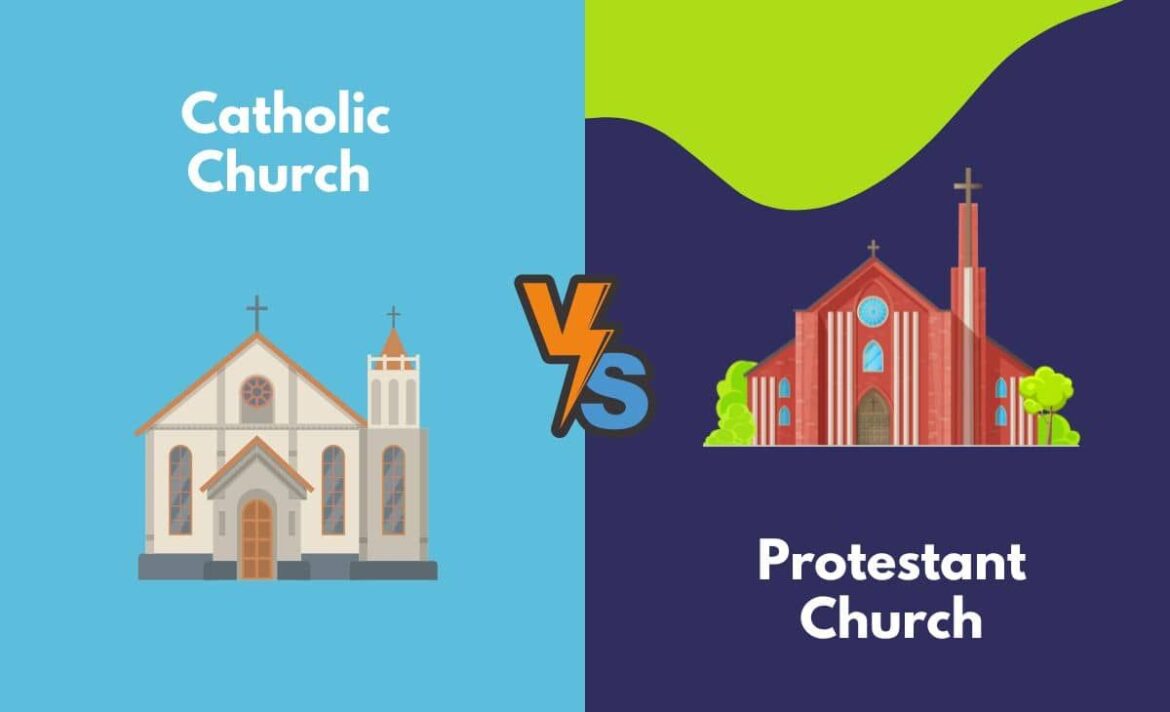The distinction between the terms “Catholic Church” and “Roman Catholic” often invites a deluge of confusion among the faithful and the curious alike. At first glance, they may seem synonymous, invoking images of the same grandiose basilicas and solemn liturgical rites. However, a more profound examination reveals subtle nuances that reflect the broader tapestry of Christianity and ecclesiastical identity.
To commence this exploration, one must grapple with the very essence of what it means to be “Catholic.” The term originates from the Greek word “katholikos,” meaning “universal.” Thus, the Catholic Church, in its foundational context, signifies the universal body of Christ, encompassing all believers who adhere to the teachings of Jesus through the lens of apostolic succession and sacred tradition.
In contrast, the term “Roman Catholic” specifically references those who are part of the Roman Rite of the larger Catholic Church, which predominantly centers around the papacy in Vatican City. This delineation unmistakably identifies the geographical and cultural locus of authority, liturgy, and governance that binds its adherents uniquely to the Pope. The Roman Catholic Church constitutes the most considerable segment of the Catholic Church, and its rituals and doctrines are pervasively evident, shaping much of the global Christian experience.
To appreciate the implications of these distinctions, one must delve into the historical tapestry that has woven both terms together. The Great Schism of 1054 was a pivotal moment that resulted in the bifurcation of Christianity into the Western Catholic Church and the Eastern Orthodox Church. This schism birthed a complex relationship between varying practices and beliefs, but it concurrently solidified the identity of those in communion with the Bishop of Rome.
Moving further into history, the Protestant Reformation catalyzed an even more intricate web. As communities peeled away to form denominations that would reject or reinterpret many Catholic doctrines, the term “Roman Catholic” began to take on greater specificity as a counterpoint to those who would identify as Protestants or members of alternative Christian traditions.
Despite these developments, the essence of what it means to be Catholic remains intact. The Catholic Church, in its totality, encompasses not only Roman Catholics, but also other rites such as the Byzantine, Alexandrian, and others. These Eastern Catholic Churches maintain significant autonomy while still recognizing the authority of the Pope. They illustrate the Catholic ethos of universality, as they celebrate the richness of diverse liturgical expressions rooted in the same apostolic tradition.
A matter worthy of reflection is the sacraments, which are the lifeblood of the Catholic faith. In Roman Catholicism, seven sacraments are upheld as essential conduits of divine grace. From Baptism to Eucharist to Confirmation, these sacred rites encapsulate the very essence of the faithful’s relationship with God. However, within the greater Catholic sphere, one observes the multitude of ways these sacraments are administered, highlighting geographical and cultural idiosyncrasies that reflect a broader understanding of divine grace.
Additionally, one cannot overlook the theological implications inherent in these terms. The Catholic Church doctrinally embraces the entirety of its scholastic heritage. Its teachings are enriched by the works of revered theologians such as St. Augustine, St. Thomas Aquinas, and more modern figures. Conversely, the Roman Catholic Church may emphasize papal infallibility and the Magisterium’s authority more explicitly than other Catholic rites, showcasing a theological emphasis that is distinct yet interwoven with the larger fabric of Catholic beliefs.
To speak of Catholicism invites conversations around the Church’s stance on social and moral issues. The Roman Catholic Church has often been at the forefront of prominent conversations regarding social justice, bioethics, and the sanctity of life. These issues culminate in the Church’s social teaching, which emphasizes the inherent dignity of every human life. Yet, within the global Catholic context, the application of these teachings can manifest differently based on cultural influences and regional challenges faced by other Catholic traditions.
The ecclesiastical governance also presents a noteworthy divergence. The centrality of the Pope as the supreme leader is a hallmark of Roman Catholicism, embodying the Petrine principle of leadership. While other Catholic rites may have their bishops and leaders, the hierarchical structure often differs. The diversity in governance permits a rich array of local practices shaped by regional customs while remaining loyal to the universal Church.
Ultimately, the question lingers: Is there a difference between the Catholic Church and Roman Catholic? The answer, resoundingly, finds its roots in both specificity and universality. The Catholic Church embraces a vast conglomeration of traditions united under one glorious umbrella, and “Roman Catholic” identifies a significant faction of that unity, characterized by its theological emphasis and ritual observance.
This nuanced differentiation prompts a reassessment of what it means to belong to the Body of Christ. It challenges the faithful to look beyond labels and to appreciate the intricate braided threads that form their identity. The depth of tradition, variations in practice, and an ever-expanding understanding of God’s grace present a rich landscape for spiritual exploration.
In the end, whether one identifies as Catholic or Roman Catholic, a thrilling journey of faith beckons. There exists an invitation to delve deeper into the mysteries of faith and the embrace of a communal, universal Church that continues to articulate God’s love through its myriad expressions. This resounds through the ages, reminding us that we are part of something grand—a divine tapestry woven together with threads of hope, faith, and love.



